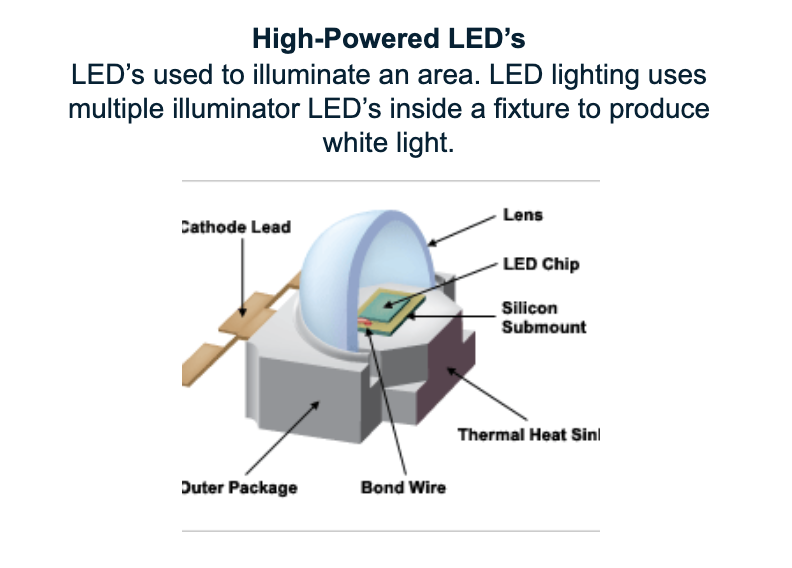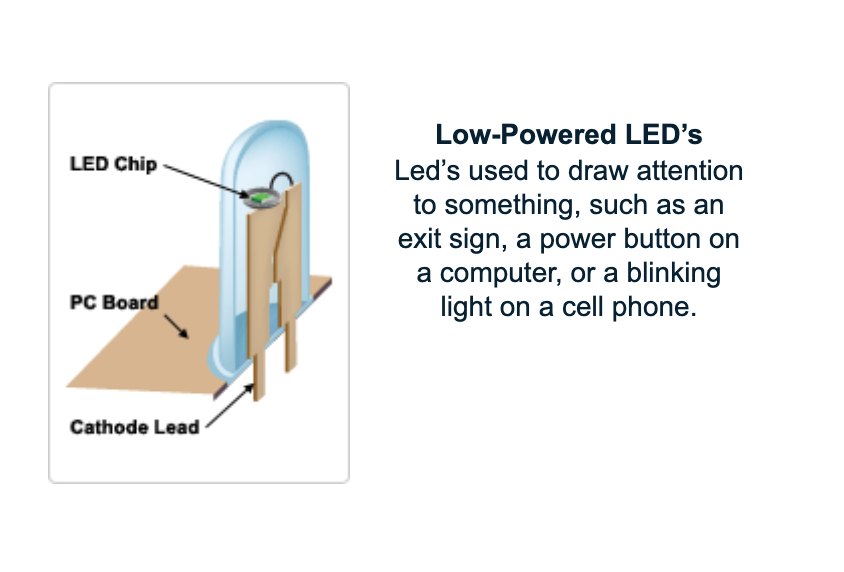Energy Conservation
All Cinema Sales and Services recognizes the growing concern regarding rising energy costs and the rewards of going “Green”. Therefore we would like to provide valuable information on products that can cut those costs and provide a responsible and environmentally safe alternatives.
What are LED’s? How do they work?
L.E.D.stands for the light-emitting diode. LED’s are small light sources that become illuminated by the movement of electrons through a semiconductor material.
Basic Parts of L.E.D. Lighting
LED lighting starts with a tiny chip comprised of layers of semi-conducting material. LED packages may contain just one chip or multiple chips, mounted on heat-conduction material called a heat sink and usually enclosed in a lens. The resulting device, typically around 7-9 mm on a side, can be used separately or in arrays. LED devices are mounted on a circuit board, which can be programmed to include lighting controls such as dimming, light sensing and preset timing. The circuit board is mounted on another heat sink to manage the heat from all the LED’s in the array. The system is then encased in a lighting fixture, architectural structure, or even a “light bulb” package.


What is Solid-State Lighting?
LED’s are part of a family of lighting technologies called Solid-State lighting. This family also includes OLED’s (Organic Light Emmiting Diodes). OLED’s consist of sheets of carbon-based compounds that glow when a current is applied through transparent electrodes. OLED’s will function like a thin film on a wall or ceiling that illuminates a room. Like LED’s, OLED’s technoloty is advancing rapidly!
Solid-State Lighting (SSL), most commonly seen in the form of Light Emitting Diodes (LED’s), have the potential to revolutionize the efficiency, appearance and quality of lighting as we know it.
How are LED lighting products different from other lighting, like fluorescent or incandescent?
Incandescent bulbs create light by passing electricity through a metal filament until it becomes so hot that it glows. Incandescent bulbs release 90% of their energy as heat.
In a CFL, and electric current is driven through a tube containing gases. This reaction produces ultraviolet light that gets transformed into visible light by fluorescent coating (called phosphor) on the inside of the tube. A CFL releases about 80% of its energy as heat.
LED lighting products use light emitting diodes to produce light very efficiently. The movement of electrons through a semiconductor material illuminates the tiny light sources we call LED’s. A small amount of heat is released backwards, into a heat sink, in a well-designed product. LED’s are basically cool to the touch.
The U.S. Department of Energy estimates that rapid adoption LED lighting in the U.S. over the next 20 years can:
-
Deliver savings of about $265 billion.
-
Avoid 40 new power plants.
-
Reduce lighting electricity demand by 33% in 2027.
